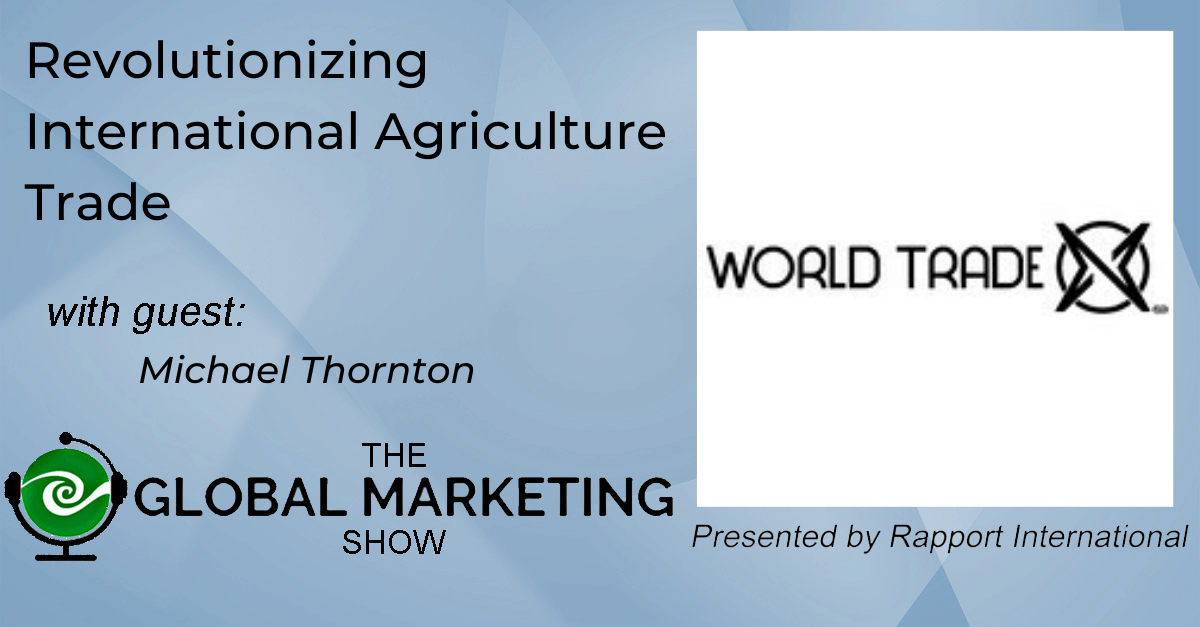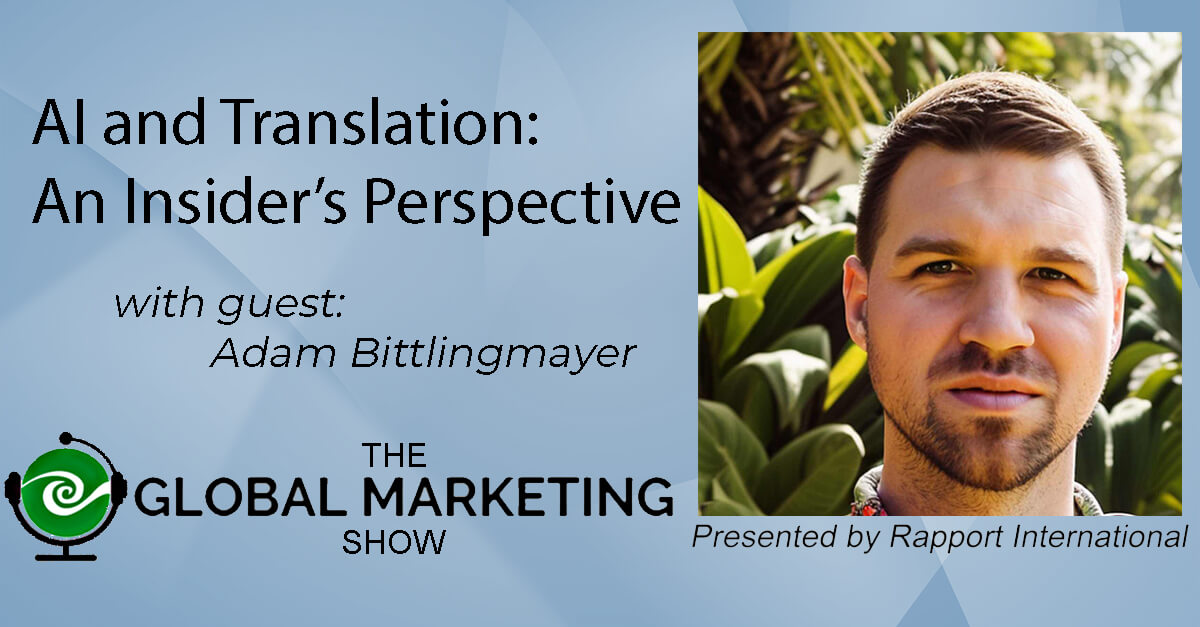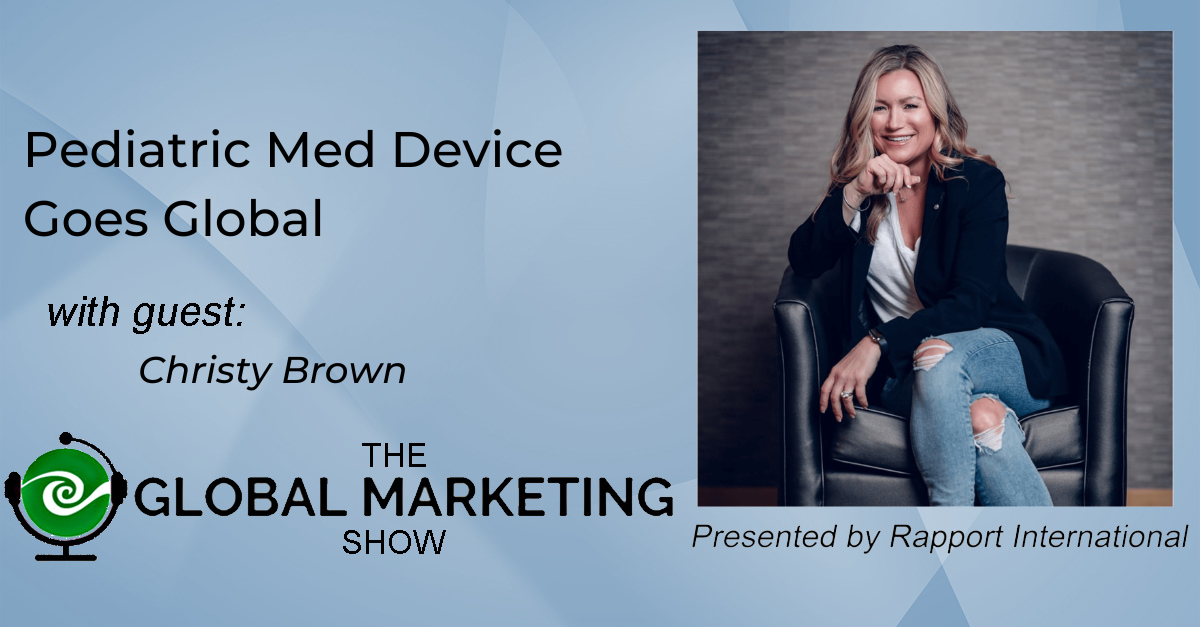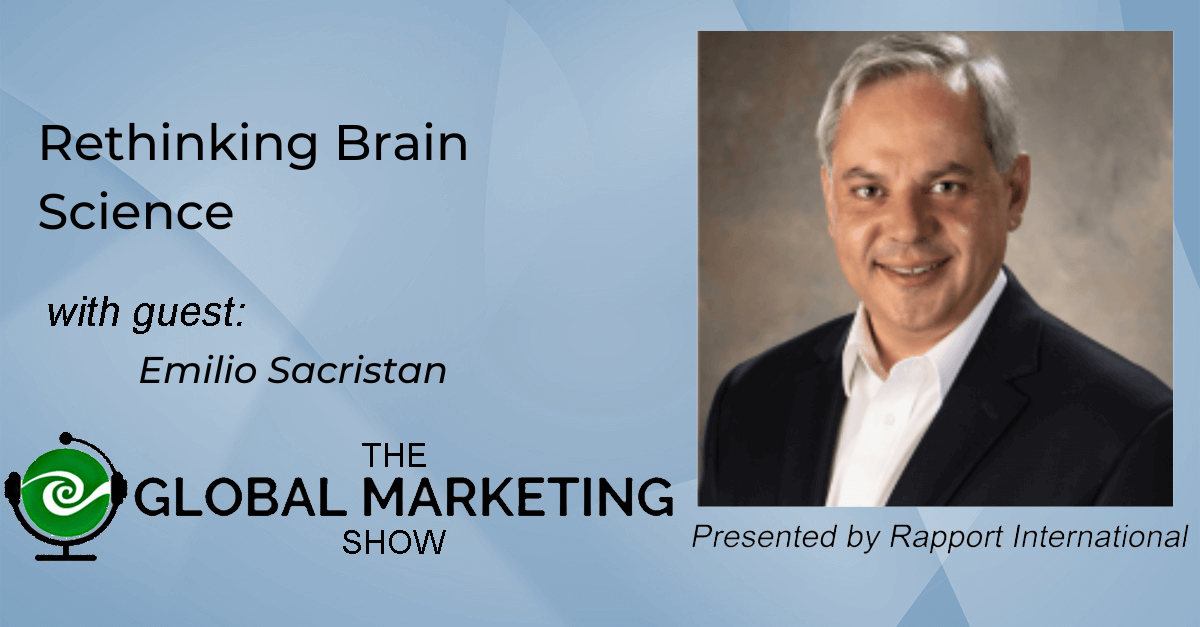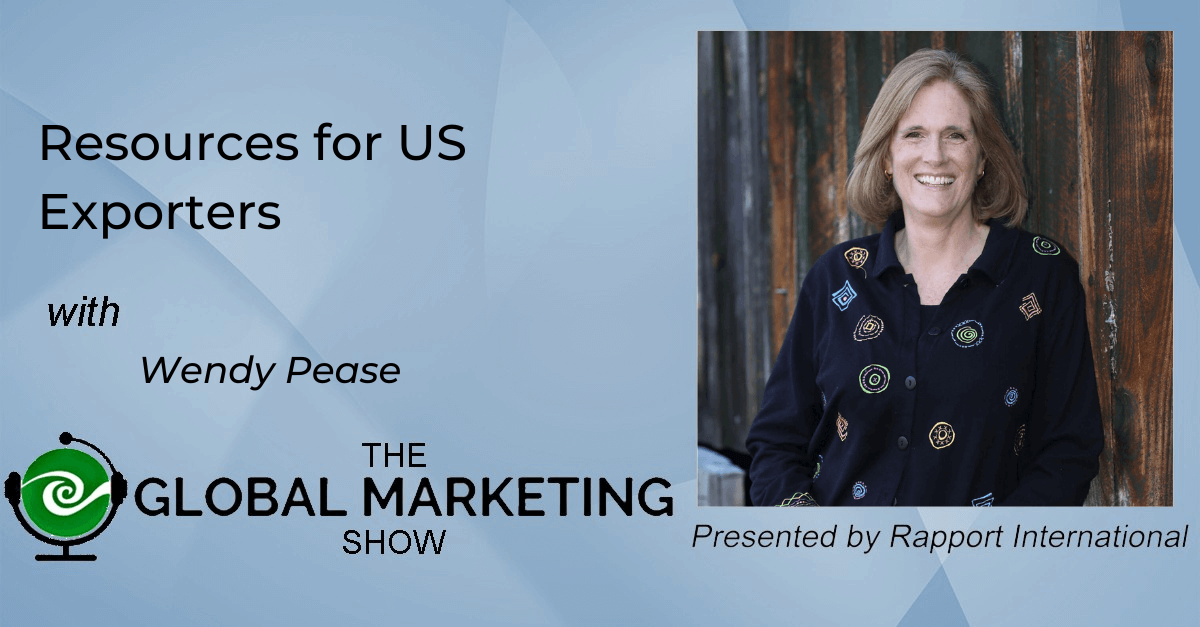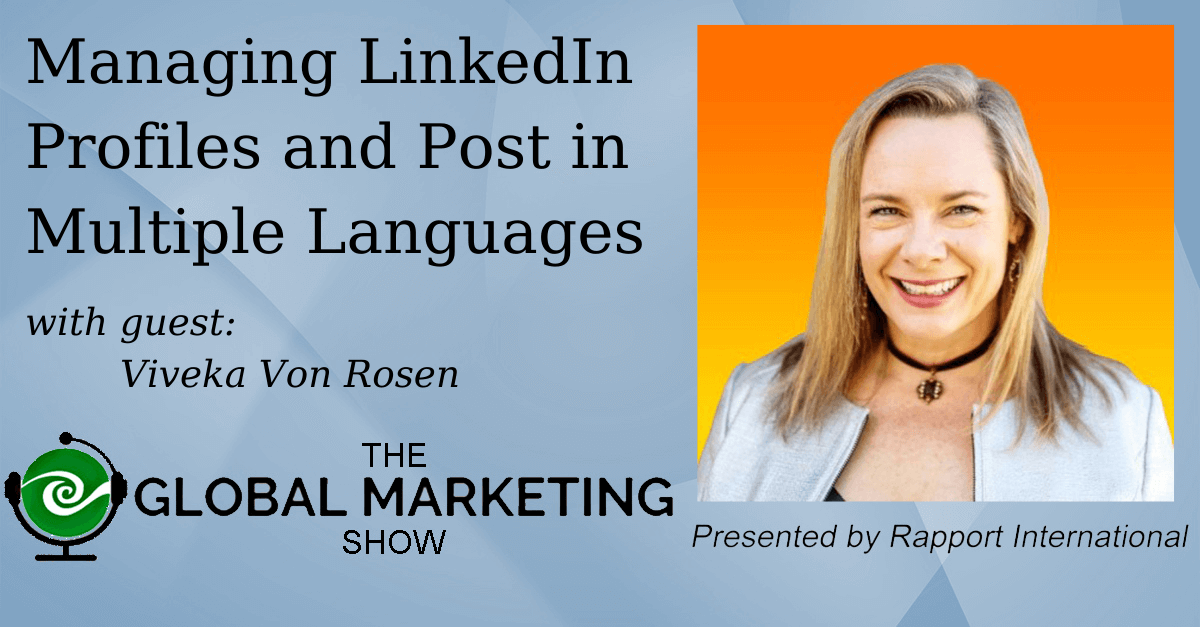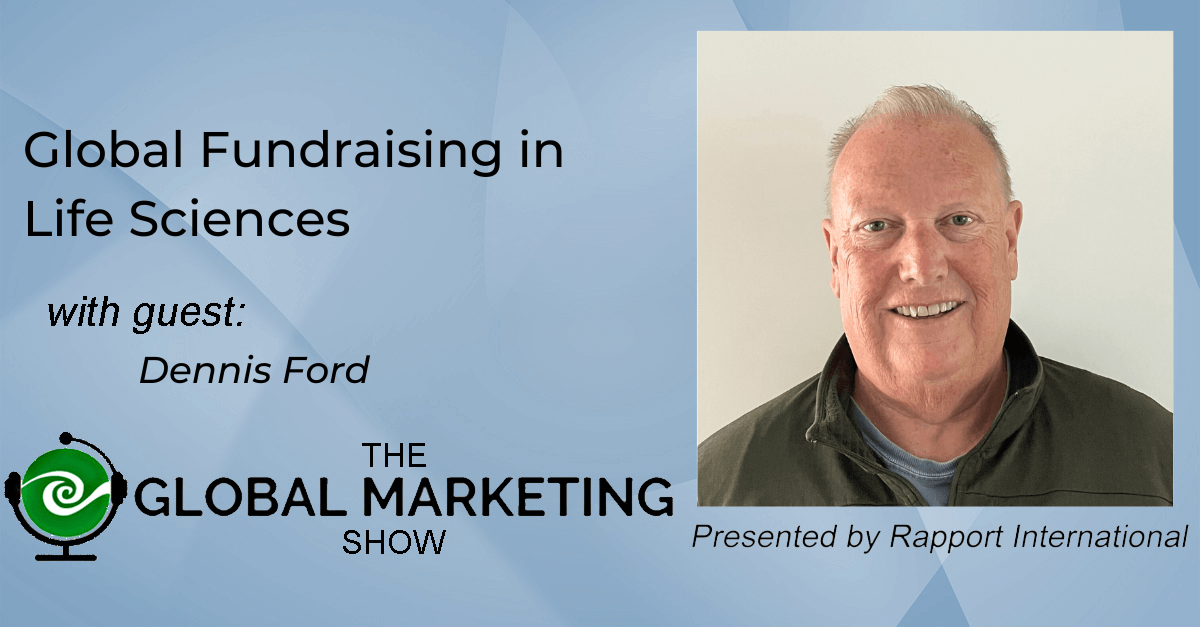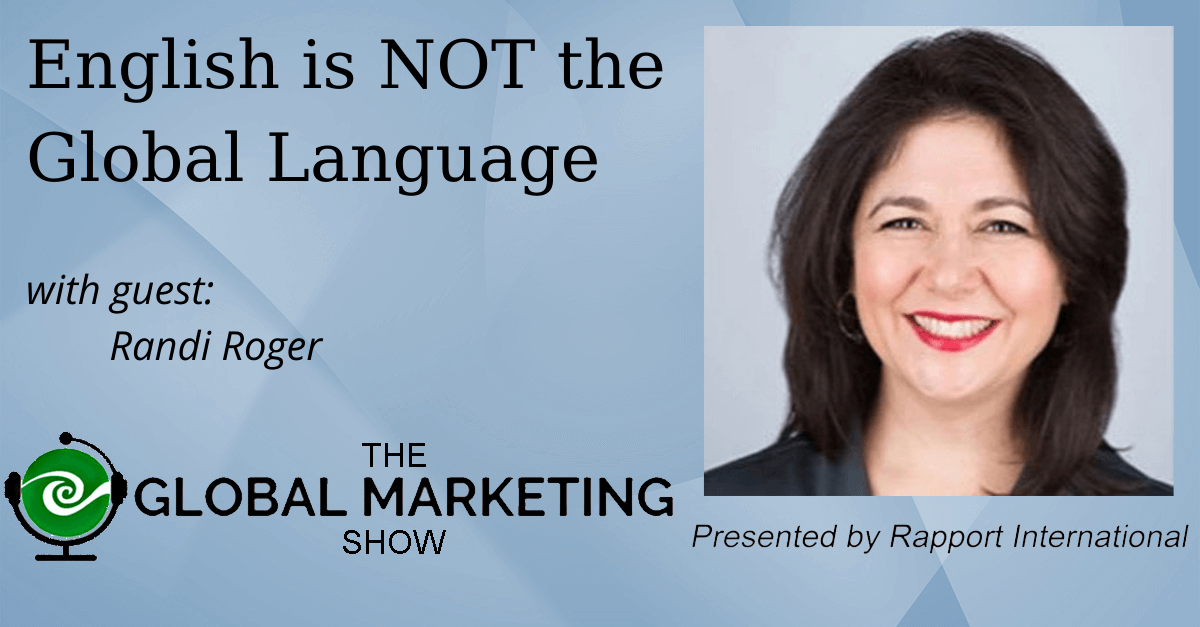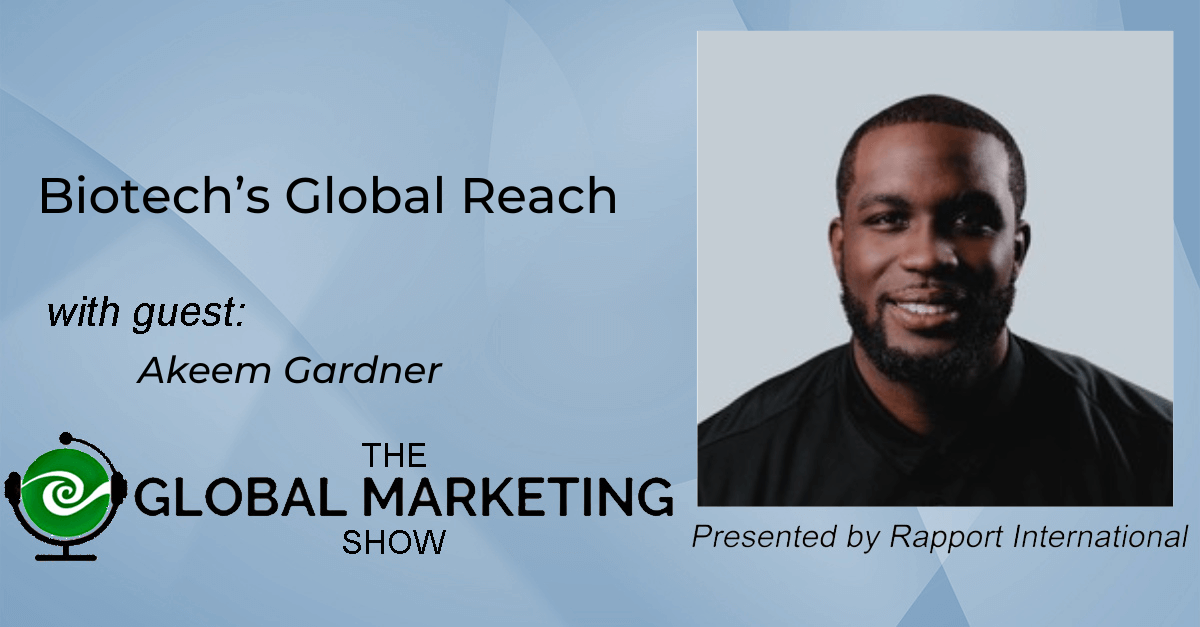Martha Cristina Garza has helped luxury brands like Cartier, Moleskine, Dr. Smood, and Maison Kayser launch in multiple countries. As a marketing expert for high end brands, she especially knows the importance of understanding your brand differentiators and the cultures of your target markets. It’s interesting to hear from her about the perspectives of consumers about brands in different countries, for instance Cartier is the number one luxury brand in Mexico, yet in Italy, it’s only a luxury brand for Grandmas! She sees that brands are getting better at story telling and understanding that they need to connect with the cultures, yet they struggle with exact messages when they don’t know the culture.
For example; a high-end backpack manufacturer from Italy positions itself as innovative and best in class in making leather backpacks that are “powered by performance”. When entering the US, the creative team came up with a campaign to connect with the market. The developed a picture of the nice leather backpack on a sofa and the tagline of “Netflix and Chill”. Now, as a native US English speaker, I understood that Netflix and chill would not talk to their target audience of businesspeople in their 40’s and 50’s. In addition to “speaking” to the wrong market of younger consumers, they also didn’t understand that the message “come on over for Netflix and Chill” includes a hidden invitation of intimacy.
She strongly recommends that marketers who aren’t native speakers and don’t fully understand the culture are well served in working with a company like Rapport International to make sure your messages are accurate and culturally appropriate.
Her final recommendations:
- Understand the local culture
- Hire experts to assist you
- Consider all touchpoints – including the human interactions with your employees.
As with every episode, I ask guests what their favorite word is. Martha’s is “la pozzanghera”, an Italian word that means puddle. She thinks it’s just a fun word. Go ahead, say it!
Links:
Websites:
https://www.instagram.com/marthacristina/?hl=en
https://www.linkedin.com/in/marthacristina/
LinkedIn: https://www.linkedin.com/in/marthacristina/
Connect with Wendy: https://www.linkedin.com/in/wendypease/
Music: Fiddle-De-Dee by Shane Ivers - https://www.silvermansound.com
ATTENTION: Below is a machine generated transcription of the podcast. Yes, at Rapport International, we talk a lot about how machine translation is not good quality. Here you see an example of what a machine can do in your own your language. This transcription is provided as a gist and to give time indicators to find a topic of interest.
[00:00:34] Wendy: It's so good to have you here, I was just on the Facebook group called The Global Marketing and Growth Group, and that is a space that we're making safe for people who have questions about global marketing to go, and I do see that the latest post up there, is about Britney Cooper. She is fascinating in talking about how her startup went too big, too fast, and it didn't have success. So it was really a good story, to listen to. So if you're interested, Go to Facebook and search for The Global Marketing and Growth Group and ask to join and we'll bring you on in. And also if you have any questions or you're trying to meet people internationally, so it's a good place to gather.
[00:01:17] And as always, I like to mention that the podcast is sponsored by Rapport International, a company that connects people around the world, across languages and cultures with high quality translation, which is written and spoken interpretation services. They're happy to do free quotes and free consults. It's an awesome team. I can speak all about them as they know them well, and Rapport International just won the E award which is a very, very high honor from the federal us government that was started back around world War II by the President to recognize companies that export or support exporters. All the team members got pins from the government to recognize that and they're very, very happy about it.
[00:02:07] So how about a tidbit from Rapport International, since we're gonna be talking to Martha Garza about luxury products today, I thought I'd give you one about lost luggage that Rapport International came up with. A sign in a Copenhagen airline ticket office, translated into English read "we take your bags and send them in all directions." Somebody missed a little bit on that translation.
[00:02:36] So, Martha, hi, how are you doing?
[00:02:39] Martha: Good. I'm so thankful to be here. I'm really excited since we met, I thought it was fascinating. The work that you do and your team does because I've gotten the experience of doing international work and bringing brands to the us and helping them with the translation.
[00:02:53] So they don't get lost in cultural translation. So I'm excited to be here today. So
[00:02:58] Wendy: good. Now her niche is very specific. It is just luxury brands. So Martha, Christina Garza is a Mexican brand strategist. Who's based in Brooklyn and she's a marketing expert in brand strateg just for luxury brands and she helps visionary.
[00:03:18] Founders find, I can say that founders find clarity, focus, and direction to expand their brand, reach their revenue and their impact. She believes that building businesses that reflect their founder's values and beliefs is what changes the world. So. Incredible background. Tell me some of the companies that you've
[00:03:42] Martha: worked for sure.
[00:03:44] So I started my journey in Italy. That was where I got my first job and I used to work for Cartier there. I was in their perfumes and I were the vision. I got the opportunity to launch a perfume in Venice, which was incredible. And. My boss trusted me with the project in a language where like in a place where I needed to speak only in a foreign language, because nobody in Benny was speaking English and I got to learn how they dealt and how they did business.
[00:04:09] So it was beautiful. And then I got the chance to move to the us. And I've been in the us for seven years. I grew up in Mexico. So I, my first language of was Spanish, but I learned English since I was. So it was fun to be able to work in English and then in Italian. And then I worked for French French company and I also speak French.
[00:04:27] It was really fun. I worked for MEISON Kaiser, which is one of the biggest bakeries around the world. They had. 30 locations in Mexico, they had 30 locations in Japan. They had 20 in the us, sadly, they, they have enclosed, but it was a beautiful, beautiful experience. I got to open five cafes with them and kind of bring that French tradition and Safa to the us, which was awesome.
[00:04:48] I also got to work with Italian brands like Moskin, which is the beautiful little notebooks that a lot of us are familiar with. And they had a beautiful brand story and I got the opportunity to bring them to the us in retail. I managed 15 retail locations, marketing, visual merchandising, and all the eventing and programming for the stores.
[00:05:05] And then PI Guro, which was a leather goods company that was also based in Italy. And we opened a store in Madison avenue, New York. I got to the PR again, eventing and a lot of the translation and kind of understanding the American market to bring the, the store here. And lastly I was at Dr. Mode.
[00:05:22] What's a Danish brand. Founded in Miami and New York, but the owner and the team was from Denmark. I did not learn Danish cause I couldn't, but it was really cool to learn from their culture and how they brought that Higa into the stores and how warm and welcoming they felt because of it
[00:05:43] Wendy: Higa has been one of the tidbits for Rapport International.
[00:05:47] So that's really, why don't you go ahead and explain what Haga is.
[00:05:52] Martha: I love it. It's I was telling some friends about it recently and I was like, no, it's not pronounced that way. Like I had to learn to be like Haga. Like it comes from your like throat. I, it took me so much and I still do not say it, but it's about creating, enjoying the little things and creating a space of comfort, like enjoying tea, enjoying candles is creating this welcoming environment wherever you are in your home and your place of work.
[00:06:16] Like this welcoming atmosphere. and it's about those little luxuries and it's a very Danish concept that everyone in Denmark is very familiar with it. A lot of my American friends weren't and it was very cool to explain how we're bringing this concept into our cafes.
[00:06:33] Wendy: So here in the us, there's so much we can learn about Higa and other ways to really experience those special moments in the, in the rush that we have.
[00:06:43] Okay. So luxury brands, when we were talking earlier, you said that taking a luxury brands somewhere else out of the, the domestic market can be very different to market internationally. So why, why would it be so different than marketing? Any other good.
[00:07:02] Martha: Yeah. I feel like all of the brands, right. Have that challenge, but I think luxury just the extra, the extra connotation that it has changes a lot country by country.
[00:07:15] And we also have a lot of cultural lenses that we're seeing things from in particular, in luxury, because. The connotation we have for some countries, you know, we have countries that we are they're non worldwide for maybe in Italy. It's a big, you know, brand, right. That has a big connotation. We have the French, a couture.
[00:07:36] That has a big luxury connotation. So there's some countries that are famous for their luxury brands. However, when they are in another country, especially in those European countries, to me, it was very interesting to see how a French brand would perform in Italy and with what crowd and we, what market, when I was working for Cartier.
[00:07:56] In Italy. I got the chance to visit Cartier in Mexico. And Cartier is the number was at least then 10 years ago. The number one luxury brand in Mexico. Overall. And in Italy though, it was perceived as the grandma's luxury brand. It was a beautiful brand with a lot of stories or history, right. But it was not the, what a young woman would choose.
[00:08:18] They would choose Chanel and they're both French brands. So to me, it was really interesting to see why in Mexico, Cartier helped so much value versus in Italy, it was more of an older crowd. Versus in France, right? That you see younger generations loving the, you know, the Trinity rings or the love ring, or the love bracelet that I see a lot now, coming back to young American generations, they love this love bracelet.
[00:08:42] I said, love a lot, but seeing how yes, like each country sees it differently and how they keep reinventing themselves, but also really being aware of where they're going. I feel like a lot of these luxury brands, we see a lot. More Asian stories in their storytelling than before they were not including.
[00:09:02] Right. And I feel like they're learning to understand who is buying now, who is their ideal client and how they can talk to them in their same language in the country they are in, because if not what you were sharing about the airline, right. We get lost in translation. So not only it's about the culture and the language, it's also about the lens that luxury looks like in that country, because luxury may.
[00:09:27] Very Higa in Denmark. Right. And it could be also very extravagant in another country. Luxury may look like gold in one country, but may look like I love Auster luxury in Italy. There's this one Aster that you can go to and stay, and they're the highest of highest. And they're very Auster because that's how they see luxury in that area.
[00:09:46] So understanding the context, but also understanding what luxury means to that country.
[00:09:50] Like
[00:09:51] Wendy: I, I get that because all culture, luxury is gonna be very different. So if you have a brand that is a luxury brand and you're in one country, how do you keep brand consistency across the globe while being very different in each country? I absolutely
[00:10:16] Martha: love that question. I feel like I got that opportunity with almost all the brands I work with.
[00:10:21] And part of it was, we were still very much in connection with the home country. In my case, when I was in Italy, I was still very connected to what France was doing. They were explaining us the why though, of what they were doing. And my job was to understand. The final result or the impact they wanted to create and translate it into an Italian market with their perceptions and with their wants and with their needs, and always reported to the home country, always reporting that case to France.
[00:10:49] When I was with Moskin in the us, they were like, this is the product we're launching. And I'm like, great. I need to find in America, who is my target market? What are the partnerships I need to build? So it felt like a very open communication in order to keep. As much as align as possible, even with different ways of execution, it had to be a big communication and back and forth, and also being able to sell my why as well as the American market, right.
[00:11:19] Or as the Italian market, when I was in Italy, like helping them understand. How we were different and how we consumed different was very helpful. So I feel like sometimes we just say like, no, this is how it's done. And that's that versus, Hey, I, I, I wanna invite you into my story and I wanna tell you why we're doing this this way.
[00:11:37] I feel like the communication was very helpful and also the inviting them into the why we're doing things in a certain way. If that makes.
[00:11:48] Wendy: To it, an exact story, like take a product and how it was different across the different
[00:11:54] Martha: countries. Absolutely. So one of the very cool projects that I got to do at least for Cartier was perfume, lunch, which now we can say the call Panter.
[00:12:06] It was the one of the first perfumes that was inspired by. The first woman, director of jewelry in Cartier, Jean za was her name. She was . So they built, they, they created this perfume based on this woman, part of the way, how it was different was not only the communication and the image that they used.
[00:12:29] They brought Italian actresses in, in our case, in Italy to represent this woman, because it was gonna be clear. Who it was for versus, you know, the French person that we're using in the ads or whatever. That's one big part. Another one was understanding how do French, sorry, how Italian perfumer would shop from us.
[00:12:50] So instead of sending, you know a box to their homes and a newsletter about it, we actually created an event and flew. Our 81 vendors from across Italy, into Venice, got them in speedboats from the airport and from the train station and brought them into, we, we built a maze that that was the experience.
[00:13:11] So they got to experience the scent. They got the experience, the shapes, and at the end, they got to experience the bottle. Italians at least 10 years ago, we're very old school still. They were used to people coming into the shops, opening their, you know, co and showing them the things. It wouldn't have worked for us to send something to the stores.
[00:13:29] It wouldn't have created the same impact. So understanding that this is of course, B2B right? Understanding that the way to connect with this vendors with they wake to an activity stores was creating an experience and was making it very personal. Was very important. When I then went, got to visit the Mexico HQ, they told me, oh, we don't do anything like that.
[00:13:50] There's one big distributor. They distribute us, which was okay. Right. I learned that in America was quite different, but it was interesting to see that in Italy, not only the marketing B2C or to the client, to the consumer was different, but also how they. Wholesale and how they connected to their vendors was different because it was very attuned to their culture in Moskin.
[00:14:15] For example, they had this huge lounge. Wait, so hold
[00:14:19] Wendy: on a second. So in Mexico you would just, did you have to market to the distributor or you provided it to them and then they chose how to market it.
[00:14:29] Martha: The distributor chose to Mar how to market and the distributor. Stand directly to the clients. We were, we gave them the material, but we do not take part of how it was presented.
[00:14:41] If that makes sense. It was more transactional in a way, but I felt like it was more Americanized in how they did it versus in Italy. It was still very personal touch, even in a wholesale environment, which I don't see a lot in the us. I've been in the us now for almost a decade, but it was very different in.
[00:15:00] Wendy: Okay. So in Italy you're creating this, the things that you're doing is putting it the, the stamp of luxury on how do you, the stamp of luxury, if your distributor is controlling all
[00:15:15] Martha: that, I think that who's actually doing the stamp of luxury is a retailer. And. Some of the things, of course we give them instructions, but some of them, they take them in their own hands.
[00:15:28] And I saw a lot of retailers in Mexico. I was not managing Mexico or just visiting, but I saw some of the productions, they were beautiful. It just felt very different to me. I feel like I could see behind the scenes and I saw everything in Italy. Right. And then I saw the difference in Mexico. They were not bad, but to your point, the more hand something passes through, right?
[00:15:49] Sometimes that they, it gets lost in translation. I feel like the fact that this was, was so high touch the final retailer, we even did some events in Italy for our retailers. Like it was that high touch. And I saw that in Mexico. Right. It was, it was more disconnected. There's I think there's no right or wrong.
[00:16:07] That's just understanding. Right, right. Like in Mexico that wouldn't have made sense because retailers didn't have the time. There were bigger distributors to bigger retailers and they saw more of a mass consumed pro product, the perfumes than in Italy that still had this very like yeah. High end touch, which I think we seen less and less.
[00:16:29] And. To my point of view is because of licenses, right? There's a lot more licenses. And a lot of these brands, luxury brands are letting go of their products and leaving it to licensees. If that makes sense.
[00:16:42] Wendy: It does. And so what I'm trying to figure out if I'm sitting here and I have a luxury brand that I know I've taken a lot of care to develop, and I picked my target market, and now I'm going global.
[00:16:52] I have to understand the distributions of the different countries, but how do I get the message out or is it really country by country? You know, like how do what's that theme that you're always advising that goes through when you're working with the different clients that you do.
[00:17:12] Martha: I love that question.
[00:17:13] So I just got the opportunity to work with a client that is actually a French company opening in Mexico. So what we had to work on was how we turn every message that we create to make sense in, in Spanish and in French, and to have that same connection. And I think, again, it's understanding who. Your main target audience is and who, what your core message is as brand strategy.
[00:17:37] What I hope my clients do is what is your biggest differentiator. And then once we know that once we know what positions you differently in your, in your market, in terms of like the competitors around you, I would speak to an expert like you guys not to give your plug, but someone that underst.
[00:17:55] Because again, I, I, I speak for languages and that's awesome. And there's things though that I'm not, I'm not an expert at, in French, specifically to certain industry. Right. And understanding that and having a conversation with someone that knows and can translate the concept and the idea in a way that is culturally relevant.
[00:18:13] So for me, yes, I would say it's country by country, because as much as country sometimes are neighbors and they could be so close and they could be so connected, but you could still get lost in generalization. I see it in Mexico. I grew up in the Northeast and I have friends from the Northwest and there's this one word simply that in my city means, or in my area means that you get you laugh about everything and in the Northwest means that you get angry about everything, same word, same country, and it has a completely different meaning.
[00:18:44] So this is why I feel like having experts on every country or, or that understand the country you're putting foot. As a luxury product is very relevant, especially because there's more at stake. I feel like there's less mistakes you can make. I was telling you a story about one of my clients that was using the Netflix and chill.
[00:19:03] Tagline as one of the conversation starters in the us, and I was completely inappropriate for a luxury brand, but they didn't know the context. They didn't know what it meant. And I think, again, all the brands can make a FAPA wait, go ahead.
[00:19:15] Wendy: Go ahead and say that again. So we saw Netflix and chill.
[00:19:19] Martha: Oh, Netflix and chill.
[00:19:21] So it was the brand, which I'm not gonna name and chill because they were a luxury brand that. A FA like a very fancy backpack. Our price point was around thousand dollars and they were using the brand and chill with a sofa image. And I was completely terrified. The thing is the agency. In their country, didn't understand the context of what Netflix and chill meant in the us, which was completely off brand for them.
[00:19:47] So, because they thought it was a trendy thing, they wanted to jump on the trend. So sometimes we see trends online and we think, oh, we join, jump on this TikTok trend or is this whatever trend I feel like old brands can make again, mistakes, but when you're luxury, it, it, the fall feels bigger because you have.
[00:20:05] Positioning within the industry, right? The standard that you're building. And that could be a big, big mistake. Okay. Okay.
[00:20:13] Wendy: I see. Let me just restate this. So we get this. So the luxury brand is a high end backpack. I know from our conversation before is made out of leather. So it's something you treat very special and it's gonna last, it might even be something that your kids wanna take from you, cuz the leather's worn just right.
[00:20:32] So it's high end. And the brand agency was trying to say, oh, let's throw it on the sofa and have, you know, watch Netflix and just chill. And so that would just not be appropriate. Now I'm getting a chat from you. It's all. ,
[00:20:51] Martha: that's what Netflix and chill means in the us. Never knew that. Okay.
[00:20:58] Wendy: So Netflix and chill also has a invitation, which means why don't you come over and have.
[00:21:05] Intimate relations or sex with me,
[00:21:08] taking the backpack very casual, but it had this hinted meaning in the unit into certain populations in the United States, which is not.
[00:21:18] Martha: Luxurious. Absolutely. That's. That was my, I wanted to share you that cuz I was like, no, this was what made me think. Oh no, that is completely not. Okay. We cannot have Netflix and chill, which means come over and let's have sex while we put on Netflix as our message and, and they didn't know, they didn't know cuz it's a very American millennial.
[00:21:41] Slang thing. So you have to know the who, who is seeing this because if someone saw it, they, of course would like be out of their head, laughing with it.
[00:21:51] Hi at
[00:21:52] Wendy: Rapport International, we focus so much on getting the right person. We call it linguistic matchmaking, but the right person to do it. Because if I had done that translation, I might have said, no, this isn't right for a luxury brand, but. You would've known that it had that hidden connotation to it and, and, and kicked back.
[00:22:11] So that's why we spent so much time getting the right person. It's yes. It's not just about words. Oh my gosh. That is such a perfect example. So yeah. Well, where do we go from there?
[00:22:26] What was something that would work in the United States? What were they saying? What, what
[00:22:31] Martha: they were an Italian company. They were an Italian company and they, they had an Italian agency. And again, I think that's why having someone like your company that could match them. It's someone that can understand.
[00:22:43] I am thankful that I could speak both languages and say, Hey guys, , this is, this doesn't work. Right. But I think sometimes companies trust their agency so much. There's nothing wrong. Hiring an agency and trusting them. I would say, ask them about having culturally relevant experts. It happens that, so that my sister she's still in Mexico, she, she she's a brand manager for a big Mexican brand of cost consumer goods.
[00:23:08] And they were doing their post in English and she was like, I think I need to send them to you cuz the agency send me this, but I don't think it makes sense. Like they were doing this TV commercial and that they had, you know, the. I do not write Christopher living, but even I could tell, tell that I was so butchered in English and that didn't make any sense.
[00:23:31] Just what you said about, you know, the flying commercial to go send your luggage everywhere anywhere. And I am like impressed that a company that is making millions of dollars a month, or yeah, it does not have a check control for this. And it just feels like it happens more regularly than we think.
[00:23:48] And for people out there that wanna go to a new country, right. That wanna expand their market. That's a beautiful thing. I feel like it's such a cool way, right? To understand other cultures, make sure that it's cultural relevant, make sure you bring eyes of an expert to every piece. And I, I feel like something important to say too, is.
[00:24:07] There's around 60 or more now with all the online world touch points that we can have. Right. Are we checking all of those touch points? Not only are online. Like I mentioned earlier with my sister's example, she was, this was a commercial for TV and I've never been involved. I, my, all my brands have been your international brands brought to the us, so they did their own commercials and stuff.
[00:24:29] But this one was a big national commercial that was costing them. Thousands of dollars. If not more than that. And there was no checking of the translation and I was completely dumbfounded that there was no one there to say, will this make sense in English before we spend all this money recording the English version of this?
[00:24:46] Or will it be culturally? Like, well, even if it's right again, correctly translate, it will make sense to them because maybe our Mexican traditions don't translate into the us and that's okay. What are their traditions? What about like, if we, we don't say, are you gonna go see your no black or the soccer game?
[00:25:03] We're gonna go see the NFL, like super bowl. How can you think of the country and the relevance? And you don't have to do that. I was also gonna say. That's why there's experts, but I would say consider all the checkpoints, the printed ones, the media ones, the social media ones, nothing is too small. And sometimes we forget that one, as you, as a founder, you of course have the best interest and know everything about your brand, but sometimes the employee of a store that you're selling to wholesale has no idea.
[00:25:32] I would say, how can you prefer them to be the best ambassadors of your brand and consider them a touchpoint. Exactly.
[00:25:40] Wendy: That's a really good point. So how are you training employees? So they've got that consistency of voice too. Right? So I, I, you know, I'm curious back on this Netflix and chill before they tried to come up with that tagline for the United States, what was the literal tagline they were using in
[00:25:58] Martha: Italy?
[00:25:59] I love that question. It was actually a campaign. It wasn't a tagline. Sorry that I said tagline earlier. It was a campaign that they built for American market. So it wasn't, what was the
[00:26:09] Wendy: match for the one? What did they do in Italy to think they would connect with the market?
[00:26:13] Martha: Oh, that was, there was no, the campaign was built exclusively for the us, from their Italian perspective.
[00:26:19] They were like, oh, this is a catch phrase in the us. Let's use it. So there was no Italian equivalent for that campaign in specific. They build it with America in mind. Does that make sense? And it
[00:26:30] Wendy: does, but what I'm trying to get at is, is they had, they sold the backpack in Italy, right? Oh yeah. Yeah. So what was their campaign that they used to sell the backpack in Italy?
[00:26:40] Martha: It was just about PIRO and about performance. So the, the guy that started that brand was all about bringing innovation to backpacks. So their backpacks are, to me the best in class. I got to see them. You can put your motorcycle helmet and also your gym clothes and all, and in this beautiful elegant bag.
[00:27:01] So it was all about. Powered by performance. So it was a very different message. I honestly don't know where the Netflix and chill came out, which was really funny to me. And especially cuz it was again, so off brand to your point earlier, before you knew what Netflix and chill was. It wasn't very connected to the incredible, you know, resources that the brand had in terms of innovation.
[00:27:22] It was more connected to how can we connect, you know, to the American market
[00:27:27] Wendy: market? Yes. Yes. That's a perfect example because not only were they straying away from their core message and value on what the backpack stood for, but they just didn't understand. So there was kind of a, a double mistake
[00:27:42] Martha: there.
[00:27:43] Yeah. Correct. I love that. Going
[00:27:46] Wendy: back to that, Yeah. So now you work with companies that have enough traction say in the United, are you working with companies that are in the United States going outside or companies that are outside coming in or both?
[00:27:59] Martha: So both and I have a couple of clients in Mexico, but most of them are in the United States, either going outside.
[00:28:06] Some that are haven't gone outside yet, but they're planning to later on I think the funnest project for me has been ones that had a cultural element to it or adopting another culture into, right. Like one of my favorites recently was this bakery that's opening into loom in Mexico. The end of like in.
[00:28:24] October, September, October, I'm excited. Cause I get to go to the opening and see their beautiful brand work. And also it was a challenge because I get to, I know this sounds silly because Spanish is my first language, but I get to do most of my brand work in English. So actually having to put my thinking, brand, thinking hat in Spanish and come up with all the messaging in Spanish was a feed for me because as much as is my first language, I was like, I know all of these things in English.
[00:28:51] But the founder was very pleased with our key messaging. I have to say that he was like, I love the taglines. We have one for wholesale one. For retail. And he's like, it really connects to who we are, it connects with the market. So that was a fun project because of it. And I'm eager to go visit, but yeah, I, I think most of the projects have been in the us so far and sometimes I did do a Mexican guy that was.
[00:29:14] Coming into the us. So that was interesting. It was more about real estate opportunities, but yeah, I have to say that I thought it was gonna be way easier to do it in Spanish. And I am just so used to doing it in English that I was like how do I start this part
[00:29:27] Wendy: of the process? Yeah, no, it's so interesting because they, you know, I've seen different people and they'll know a subject really well.
[00:29:36] Or you can tell where they learned the language. I took an advanced Spanish class when I was in MBA school. And they could tell that I hadn't ever lived in a house. Because I had had a lot. I mean, I had, I lived in Mexico in first and second grade, but the kinds of words, like, I didn't know, broom and dust panned and stuff like that.
[00:29:57] Whereas if somebody who grew up, you know, who did an exchange program and lived with the family, they'd know. So people who did an exchange program and stayed in a dorm would have a different set of terminology. So it is so fascinating that what language do you
[00:30:10] Martha: dream? I think in English, mostly, sometimes in Spanish, but funny.
[00:30:16] Like, I, I, I've been here now for almost seven and a half years, so it's interesting that I still, a lot of my life is in English. My fiance is American, so we, we speak Spanglish. He's learning a lot of Spanish, which is great. Yeah. I dream in English. I do my notes in English. I do my, when I do like journaling, I do it in English, which is so weird, but it's yeah, it's just my, I run my life in English.
[00:30:39] And I love getting to speak Spanish with my family. They're all still in Mexico. So I love getting to connect with them. We do that weekly, but most of my life happens in
[00:30:48] Wendy: English. Well, this is something interesting. Now, when you get angry and you wanna swear, do you swear in English or Spanish
[00:30:55] Martha: in
[00:30:59] Wendy: when you really love someone? Or want to, or feel strongly about them. Do you wanna say it in Spanish or English? Spanish?
[00:31:10] Emotion still come through in your native language? Oh yes.
[00:31:13] Martha: I remember before my now fiance that I was dating someone and I was Italian and I, I used to get angry and say, I don't like it that I have to yell at like English or Italian. Cuz I wanna just yell at you in Spanish. Like this is not working for me.
[00:31:27] I need to just share my emotions and like having to translate it to Italian or English. It just takes time for me now I'm so used to English, but back then I didn't live in the us. So it was really funny, was like, I need to yell to you in Spanish. He's like, you could do it. I don't get it. And I was like, ah, like it's worse.
[00:31:43] Wendy: we're out of time. But what final records you have to any luxury brands or luxury eCommerce companies that wanna take their products international?
[00:31:55] Martha: I would say consider the culture, not only the language. Arm yourself with experts. And don't forget about all the touchpoints and humans are touchpoints for your brand social media's touchpoint, anyone that interacts with your client as a face of your brand, virtually online on media printed TV, anything it's a touchpoint.
[00:32:16] So consider all of them to be successful. Try to have like the same message everywhere to build trust. Advice.
[00:32:26] Wendy: Okay. Now how about your favorite foreign word?
[00:32:29] Martha: I love this and I, I feel a little betraying of my Spanish. Not saying that's someone in Spanish, but my favorite foreign word is LA, which means puddle in Italian.
[00:32:43] So not a profound word. I just think it's so beautiful. Sounds so poetic. LA sounds so
[00:32:50] Wendy: beautiful. A restaurant and call it I dunno what we'll serve, maybe putting, but
[00:33:01] Reach you, if they want to find your expertise or learn more about you.
[00:33:06] Martha: Thank you. They can find me at Martha with an H Garza, G a R Z a.com. They could also find me on LinkedIn as Martha, Christina, Martha, with an H Christina with no H because my Mexican name Garza, G a R Z a. And I'm also very active on Facebook and my Instagram.
[00:33:25] Same at Martha with an H Christina with no H no last name, Martha, Christina. That's how I'm on Instagram. Feel free to message me. I'm happy to do a coffee chat. I love to connect with your people. I think they're my people. Thank you for having me again.
[00:33:38] Wendy: Thank you so much for being on. And this has been fascinating to me because you know, luxury brands are a little bit outta my realm with all the years of marketing that I've had with experience.
[00:33:47] So I'm, I'm always so curious. And just a reminder, if. You've liked this episode, make sure you share it. You like it, and that you follow us. So you get alerted to other episodes. We are doing our nor new format now where we're we've, we've changed it to a half an hour to just get into the helpful information.
[00:34:06] Love to have you on the Facebook chat group. And let me know what you think of it, or if there's any other episodes that you would like to hear. So, Martha, thank you so much for being with me here today.
[00:34:18] Martha: Having me, it was so fun to chat with you.
[00:34:21] Wendy: Let this chat with you too. You take care and have a good evening.
[00:34:24] Martha: You too.

Are you a global marketing professional with stories to share?
Popular Posts
Popular industry news, interviews, technologies, and resources.
